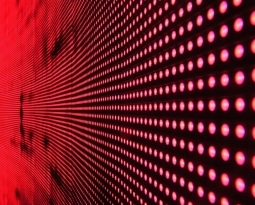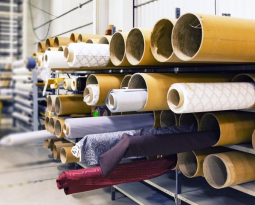Maryland Startup Announces Next-Gen Quantum Computer
Maryland-based quantum computing startup, IonQ, has announced its next-gen quantum computer. The device has a lower error rate than any other on the market due to the unique way it was built.
What is a Quantum Computer?
Simply put, a quantum computer is a machine that uses a quantum system to perform calculations that regular computers can’t. Classical computers (including smartphones and laptops) put information into binary “bits” – 0s and 1s. In a quantum computer, the basic unit of memory is a quantum bit (qubit). Qubits are made using physical systems, such as the spin of an electron or the orientation of a photon. These systems can be in many different arrangements all at once – quantum superposition. Qubits can also be inextricably linked together – quantum entanglement. The result is that a series of qubits can represent different things simultaneously.
For example, eight bits is enough for a traditional computer to represent any number between 0 and 255. But, eight qubits is enough for a quantum computer to represent every number between 0 and 255 at the same time. A few hundred entangled qubits would be enough to represent more numbers than there are atoms in the universe.
Applications
Quantum computers have an edge of traditional computers because of this ability to link and represent information simultaneously. That makes them extremely useful for things like artificial intelligence (AI), and cybersecurity and encryption.
However, because developers are working with new, intricate technology, the systems are not always stable. Quantum computers are highly sensitive: heat, electromagnetic fields (EMFs) and collisions with air molecules can cause a qubit to lose its quantum properties. This process, known as quantum decoherence, causes the system to crash, and it happens more quickly the more particles that are involved.
At present, classic computers outperform quantum computers, but that may change within the next decade. And, even then, they’re not likely to replace classical computers, but be used as a different tool; emails and spreadsheets will stay with computers we know now, and more advanced data work will be done on quantum computers.
IonQ’s Next Generation Computer
Quantum computer makers typically use ‘synthetic’ quantum systems for their quantum bits (qubits). For example, developers may use loops of supercooled superconducting wire, intentional imperfections in crystalline silicon, or other designs carefully coaxed to behave as quantum systems.Some companies (like IBM and Google) are experimenting with superconducting qubits to develop their quantum computers. Others (like D-wave) utilize annealer technology, which involves cooling qubits during an algorithm’s execution to change their value passively.
IonQ’s method is different. The company uses a naturally occurring quantum system: individual atoms. It uses a “flexible” Ion Trap Technology approach. This involves turning atoms into ions, and then using EMFs to deploy and trap the ions on silicon chips. It can then load any number of ions into a linear chain, meaning it can possibly use a 100+ qubit system without having to create new hardware.
However, errors are extremely common with quantum computers, because of decoherence and/or quantum noise (interference from EMFs, lasers, etc). If this happens, the computing from the qubits is interrupted. Some quantum computer makers believe that more qubits will mean better working technology, so they add as many as possible and use separate systems to deal with errors. IonQ, on the other hand, is trying to develop qubits that are less error prone. And this could entail reducing the number of qubits in the system. For instance, quantum computers by IBM and Google have about 50 qubits; IonQ’s system has only 32. And yet it also has a lower error rate to give the system 99.9 percent fidelity. In fact, IBM has devised a calculation for quantum volume, and IonQ’s system calculates at over four million, the highest known number.
IonQ says the computers should be commercially available soon.
Are you developing new software, products or inventions? Did you know your R&D experiments could be eligible for the R&D Tax Credit and you can receive up to 14% back on your expenses? To find out more, please contact a Swanson Reed R&D Specialist today or check out our free online eligibility test.
Who We Are:
Swanson Reed is one of the U.S.’s largest Specialist R&D tax advisory firms, offering tax credibility assessments, claim preparation, and advisory services. We manage all facets of the R&D tax credit program, from claim preparation and audit compliance to claim disputes.
Swanson Reed regularly hosts free webinars and provides free IRS CE and CPE credits for CPAs and CFPs. For more information please visit us at www.swansonreed.com/webinars or contact your usual Swanson Reed representative.

















